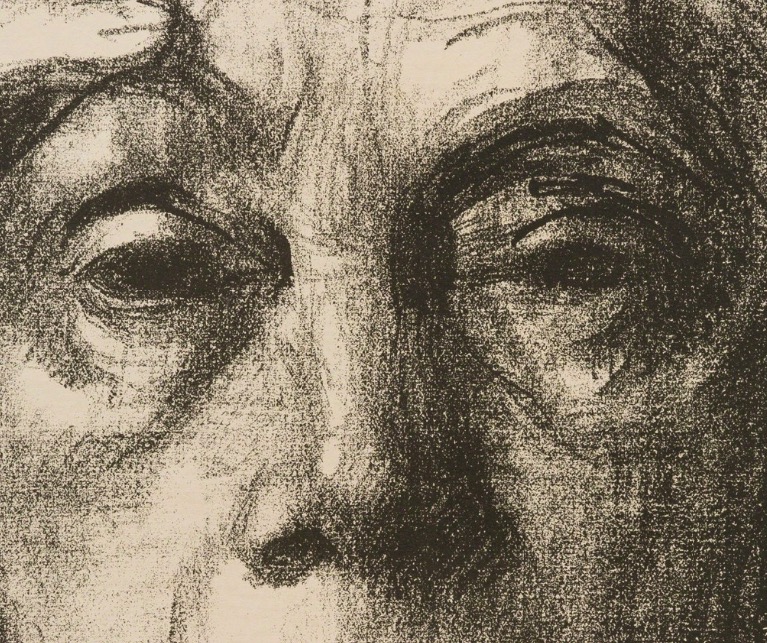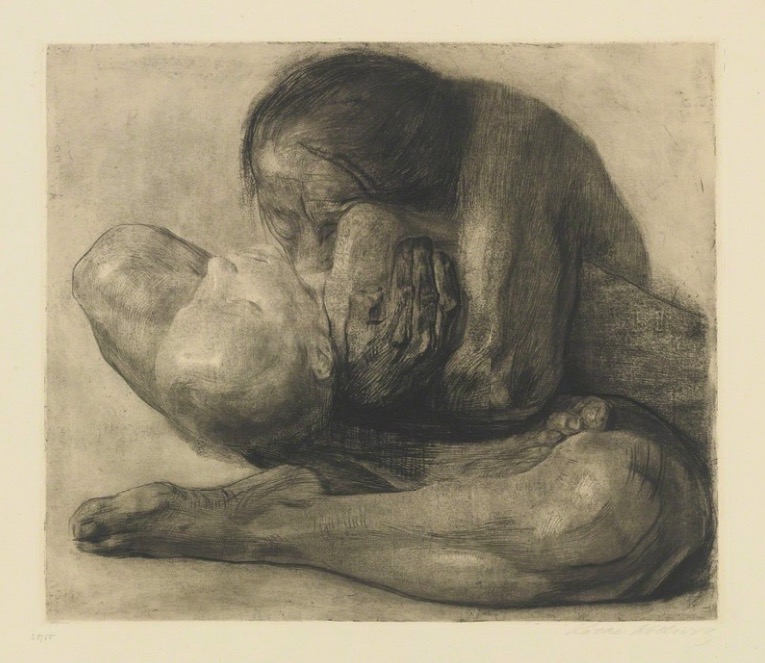Käthe Kollwitz was a German artist who focused on creating portraits of working class women, as well as making a lot of self-portraits.

Through her compositions, and her use of materials and tones, Käthe Kollwitz was able to show the struggles and pains that her subjects were living through.
At the time Käthe Kollwitz was working, most famous or well-known artwork was made by men. Because of this, and since Kollwitz depicted females so prominently in her portrait work, she was somewhat of a pioneer for female artists. Kollwitz is known as one of Germany’s most important artists from the early 1900’s. As well as drawings, she used a range of different media such as painting, sculpture and printing (including woodcuts and lithography).
Click here for my full project showing how to draw faces and self portraits.

Look closely at this self portrait by Käthe Kollwitz – what do you think the artist was trying to show with her use of marks and colours? Would you describe this as a happy image? Why or why not?

Above is an example of an etching by Käthe Kollwitz. It shows a mother smiling fondly at her child. The artist still uses harsh lines and marks, but this time they seem to depict movement, almost as though they are swirling around the child. Look at how the artist creates tones through mark-making instead of shading:

This style of drawing can be called naturalistic – the figures in the portraits do not look unrealistic, neither do they look hyperreal.
Käthe Kollwitz seemed to choose compositions that could strike an emotional response from the viewer – mothers with their children, families in unfortunate situations and women working hard. Her use of harsh dark and light colours add a dramatic impact to her portraits, exaggerating the emotions she was capturing. Kollwitz made artwork after World War I, and after losing her own son in the war, she often tried to explore the experience of mourning and loss.
I have shared a list of portrait artists to research – enjoy!
DOWNLOAD this page below, for free, as an Artist Research handout to use in your lesson. It includes all of the facts and images, and has questions for students to answer.



Kollwitz wanted to show the harsh realities of war through her portraiture and other artwork; her works have a very detailed quality which mostly depict grief, sorry and pain.
What do you think of Käthe Kollwitz’s artwork? How would you describe the mood, atmosphere and emotions you can see in the images? Let me know in the comments!
She’s not afraid to look at the dark side of life, is she. I wonder why she drew a finger holding the left eyebrow up in her self portrait. She drew the wrinkles. The eyes are dark even in the whites of the eyes. It’s hard to ignore the sadness in life but if you can face it you’re the stronger artist for it.
LikeLiked by 1 person
Really good range of information & artist , I especially love Kathe Kollwitz. If I ever return to art teaching I’ll happily revisit, thank you for your generosity.
LikeLiked by 1 person
Glad you found it interesting ☺
LikeLike